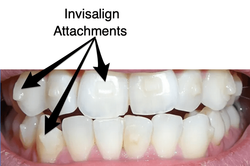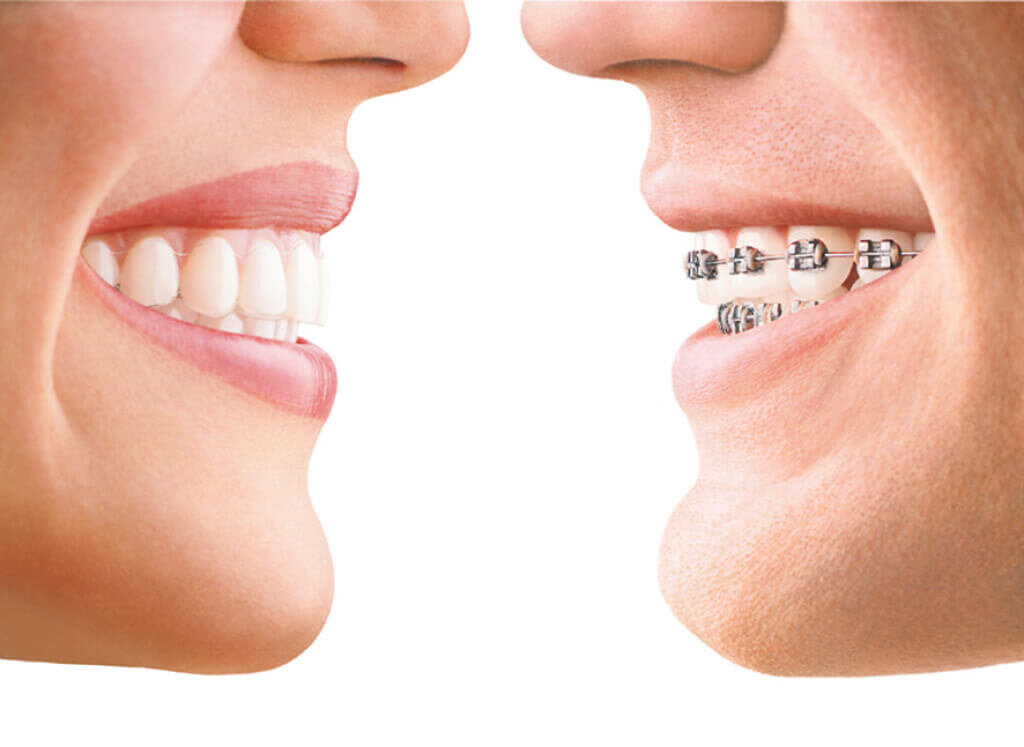Invisalign vs. Traditional Dental braces: Which Alternative Is Right for You?
When thinking about orthodontic treatment, the option in between Invisalign and conventional dental braces provides a number of essential aspects that warrant careful analysis. Invisalign provides a very discreet alternative with detachable aligners, while traditional braces offer a much more noticeable yet efficient remedy for severe imbalance.
Review of Treatment Options

In comparison, standard braces include metal braces and cords that are adhered to the teeth. This technique uses continuous pressure with time to accomplish alignment. While efficient for intricate orthodontic problems, traditional dental braces need regular check outs for modifications and can position obstacles in preserving oral health as a result of the difficulty of cleansing around cords and braces.
Both alternatives have their merits, and the option usually rests on certain dental conditions, way of life choices, and person conformity. Ultimately, seeking advice from an orthodontic specialist is essential for figuring out the most ideal treatment plan customized to private needs. Recognizing the subtleties of each option can significantly affect the overall success of orthodontic therapy.
Aesthetic Factors To Consider
A significant element influencing the option between Invisalign and typical braces is the aesthetic allure each therapy provides. Invisalign aligners are crafted from clear plastic, making them essentially invisible when worn. This very discreet appearance is particularly appealing to grownups and teenagers who might really feel uneasy about their orthodontic treatment. The capacity to keep a natural smile throughout the placement procedure can considerably enhance the client's self-confidence in social and specialist settings.
In contrast, typical braces consist of metal brackets and wires, which can be extra recognizable. While innovations in orthodontic technology have actually brought about the advancement of smaller braces and colored elastics, conventional dental braces still preserve an even more noticeable profile. For some individuals, the exposure of braces might prevent them from seeking necessary treatment.
Ultimately, the choice between Invisalign and standard dental braces may pivot on individual choices concerning aesthetic appeals. People that focus on discretion usually favor Invisalign, while those that are less worried about visibility might choose standard dental braces. Understanding the aesthetic effects of each choice is vital for making a notified decision that straightens with one's way of living and choices.
Convenience and Convenience

In terms of comfort, Invisalign aligners are detachable, enabling individuals to appreciate their preferred foods without limitation and preserve ideal dental hygiene. Brushing and flossing are streamlined, as the aligners can be taken out throughout these regimens, whereas traditional dental braces require cautious navigating around brackets and cords.
Additionally, Invisalign's progressive system enables for less orthodontic visits. Clients generally obtain numerous sets of aligners simultaneously, which can simplify the treatment procedure and minimize time invested in the orthodontist's chair. On the other hand, traditional braces demand routine adjustments, making them less convenient for those with busy timetables. Invisalign. Overall, the comfort and ease of Invisalign make it an enticing choice for many people seeking orthodontic therapy.
Treatment Period and Effectiveness
While both Invisalign and conventional braces work in fixing oral imbalances, the duration of therapy can differ substantially between both options. Typically, Invisalign therapy can take anywhere from 12 to 18 months, depending on the intricacy of the case. The clear aligners work by gradually shifting teeth into their desired positions, and regular follow-ups with an orthodontist aid guarantee progression stays on the right track.
In contrast, standard dental braces frequently need a longer dedication, generally ranging from 18 months to three years. This is because of their fixed nature and making use of braces and cords, which can be more reliable for complex situations and extreme imbalances (Invisalign). The therapy effectiveness of typical dental braces is well-documented, as they enable exact modifications and higher control over tooth activity
Inevitably, the option in between Invisalign and typical dental braces might hinge on both the expected treatment period and the specific oral concerns at hand. Consulting with an orthodontist is essential, as they can offer customized referrals based upon private demands, ensuring the selected technique lines up with preferred timeframes and results.
Price Contrast and Insurance Coverage Choices
Cost plays a considerable role in the decision-making process for individuals thinking about orthodontic therapy, whether choosing Invisalign or standard braces. Typically, the expense of Invisalign varieties from $3,000 to $8,000, while typical dental braces normally set you back in between $2,000 and $6,000. Aspects influencing navigate here these expenses consist of the intricacy of the instance, the period of therapy, and geographical location.
Lots of dental insurance strategies give partial coverage for orthodontic therapies, but the specifics can differ widely. Usually, standard braces might be much more often covered by insurance policy strategies contrasted to Invisalign, which some insurance firms classify as a cosmetic procedure.
Additionally, several orthodontic methods use versatile layaway plan, making both treatment options more available. Patients should ask about potential funding options and discounts for upfront repayments. Assessing the complete expense, including insurance benefits and payment strategies, is crucial for making an informed decision that aligns with both visual choices and budget factors to consider.

Conclusion
In summary, the choice between Invisalign and conventional dental braces depends upon numerous variables, including visual preferences, comfort, treatment duration, and cost. Invisalign provides a very discreet, removable option that assists in dental try this website hygiene and nutritional versatility, while traditional dental braces might be extra suitable for complex oral issues and often come at a lower price factor. Inevitably, assessment with an orthodontist is necessary to assess individual situations and identify the most ideal therapy alternative for achieving optimum dental positioning.
When thinking about orthodontic therapy, the selection between Invisalign and traditional dental braces presents a number of vital elements that merit mindful assessment.Comparing Invisalign and standard dental braces exposes distinct treatment alternatives for orthodontic modification.While both Invisalign and traditional dental braces are efficient in fixing oral misalignments, the duration of therapy can vary dramatically between the 2 choices.Expense plays a significant duty in the decision-making procedure for people taking into consideration orthodontic treatment, whether opting for Invisalign or standard braces.In summary, the selection between Invisalign and Going Here traditional braces pivots on multiple factors, including aesthetic choices, comfort, therapy period, and price.